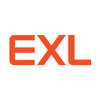Filter interviews by
JavaTpoint Interview Questions and Answers
JavaTpoint Interview Experiences
8 interviews found
I applied via Campus Placement and was interviewed before Mar 2023. There was 1 interview round.
(4 Questions)
- Q1. Java basic questions
- Q2. What is java programming language
- Ans.
Java is a high-level programming language known for its portability, security, and object-oriented features.
Java is platform-independent, meaning it can run on any device with a Java Virtual Machine (JVM).
It is known for its strong security features, such as automatic memory management and built-in exception handling.
Java is object-oriented, allowing for the creation of reusable code through classes and objects.
Popular...
- Q3. Explain oops concept in java
- Ans.
OOPs concept in Java is a programming paradigm based on the concept of objects.
OOPs stands for Object-Oriented Programming
Key concepts include classes, objects, inheritance, polymorphism, and encapsulation
Example: Class Car { String color; void drive() { //code here } }
- Q4. What language is better java or c++
- Ans.
Both Java and C++ have their own strengths and weaknesses, it depends on the specific requirements of the project.
Java is platform-independent, making it suitable for web applications and mobile development.
C++ is faster and more efficient, making it a better choice for system-level programming and game development.
Java has automatic memory management through garbage collection, while C++ requires manual memory managem...
Interview Preparation Tips
Skills evaluated in this interview
I appeared for an interview in Mar 2025, where I was asked the following questions.
- Q1. C programming language
- Q2. C++ programming language
- Q3. Java program language
- Q4. Python programming language
Interview Preparation Tips
(2 Questions)
- Q1. What is javatpoint
- Ans.
Javatpoint is a popular online tutorial website for learning various programming languages and technologies.
Offers tutorials on Java, Python, C++, HTML, CSS, JavaScript, etc.
Provides examples, exercises, and quizzes for practice
Covers topics like web development, database management, and software testing
- Q2. Tell me About yourself
Skills evaluated in this interview
I appeared for an interview before Mar 2023.
(2 Questions)
- Q1. Java OOPS concepts
- Q2. SQL Joins types
Interview Preparation Tips
I applied via Company Website and was interviewed before Mar 2023. There was 1 interview round.
(1 Question)
- Q1. Tell me something about yourself
I applied via Company Website and was interviewed before Mar 2023. There was 1 interview round.
(2 Questions)
- Q1. Intro of yourself
- Q2. Educational background
Interview Questionnaire
2 Questions
- Q1. Why should we hire you for this job
- Q2. Strengths Willingness to work and flexibility Leadership skills Ability and willingness to learn new things Contributions to the organizations in which you have worked or volunteered Creativity in sol...
I applied via Naukri.com and was interviewed before Dec 2019. There were 3 interview rounds.
Interview Questionnaire
1 Question
- Q1. Can you make my future bright. I'm just asking you is your company are nice and not.
Interview Preparation Tips
Top trending discussions






Interview questions from similar companies

I applied via Recruitment Consultant and was interviewed in Feb 2020. There were 8 interview rounds.
Interview Questionnaire
3 Questions
- Q1. General questions related to your educational background.
- Q2. Some questions that required common sense.
- Q3. Any thing related to your previous job.
- Ans.
In my previous role, I led a team to enhance operational efficiency and drive strategic initiatives, resulting in significant growth.
Implemented a new project management system that improved team collaboration and reduced project delivery times by 20%.
Developed a comprehensive training program that increased employee engagement and reduced turnover rates by 15%.
Spearheaded a market analysis initiative that identified n...
Interview Preparation Tips

I applied via Walk-in and was interviewed before Sep 2020. There were 4 interview rounds.
Interview Questionnaire
2 Questions
- Q1. About myself, my work experience and all
- Q2. Asked about famliy background
Interview Preparation Tips
JavaTpoint Interview FAQs
Tell us how to improve this page.
JavaTpoint Interviews By Designations
- JavaTpoint Technical Content Writer Interview Questions
- JavaTpoint Content Writer Intern Interview Questions
- JavaTpoint Copywriter Interview Questions
- JavaTpoint Computer Operator Interview Questions
- JavaTpoint IT (Data Analytics) Interview Questions
- JavaTpoint Web Content Writer Interview Questions
Interview Questions for Popular Designations
- Senior Executive Interview Questions
- Analyst Interview Questions
- Software Developer Interview Questions
- Senior Associate Interview Questions
- Business Analyst Interview Questions
- Sales Executive Interview Questions
- Associate Software Engineer Interview Questions
- Graduate Engineer Trainee (Get) Interview Questions
- Show more
Overall Interview Experience Rating
based on 5 interview experiences
Difficulty level
Duration
Interview Questions from Similar Companies
JavaTpoint Reviews and Ratings
based on 29 reviews
Rating in categories
|
Technical Content Developer
18
salaries
| ₹1.8 L/yr - ₹4.6 L/yr |
|
Technical Content Writer
15
salaries
| ₹1 L/yr - ₹3 L/yr |
|
Technical Writer
11
salaries
| ₹1.2 L/yr - ₹4.1 L/yr |
|
Content Writer
10
salaries
| ₹0.7 L/yr - ₹1.8 L/yr |
|
Software Developer
4
salaries
| ₹2 L/yr - ₹4.5 L/yr |

Cognizant

Teleperformance

iEnergizer

Reliance Retail
- Home >
- Interviews >
- JavaTpoint Interview Questions











